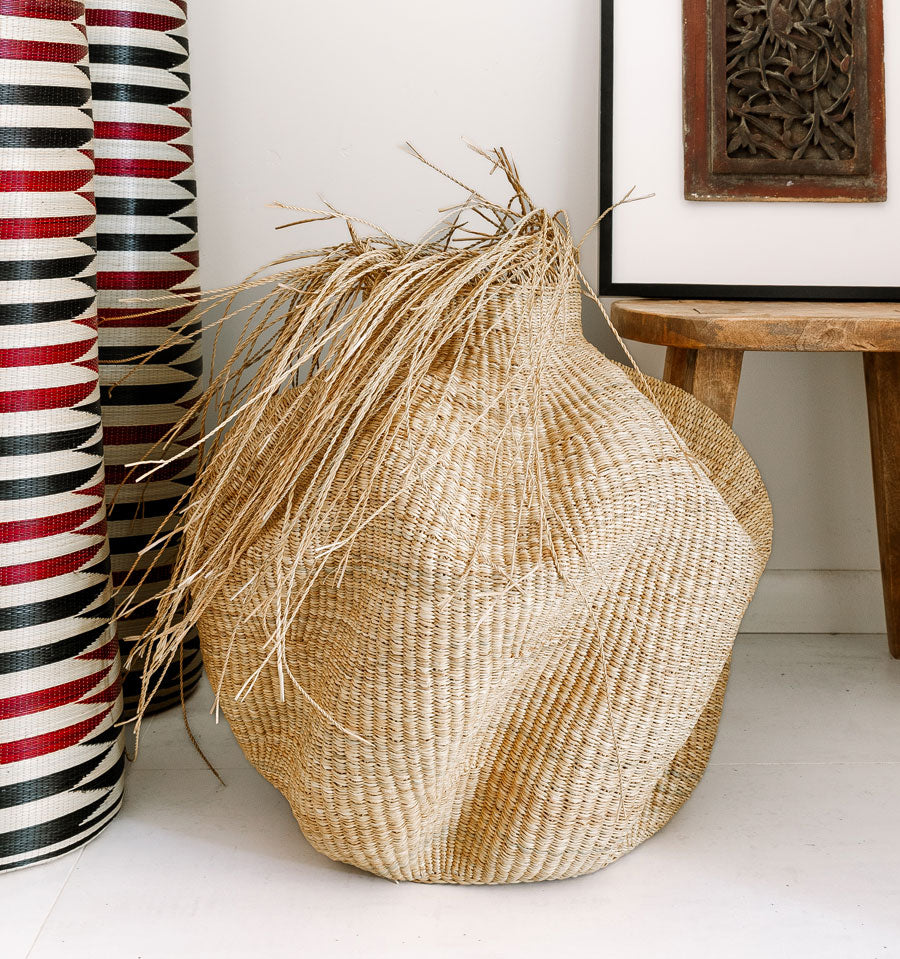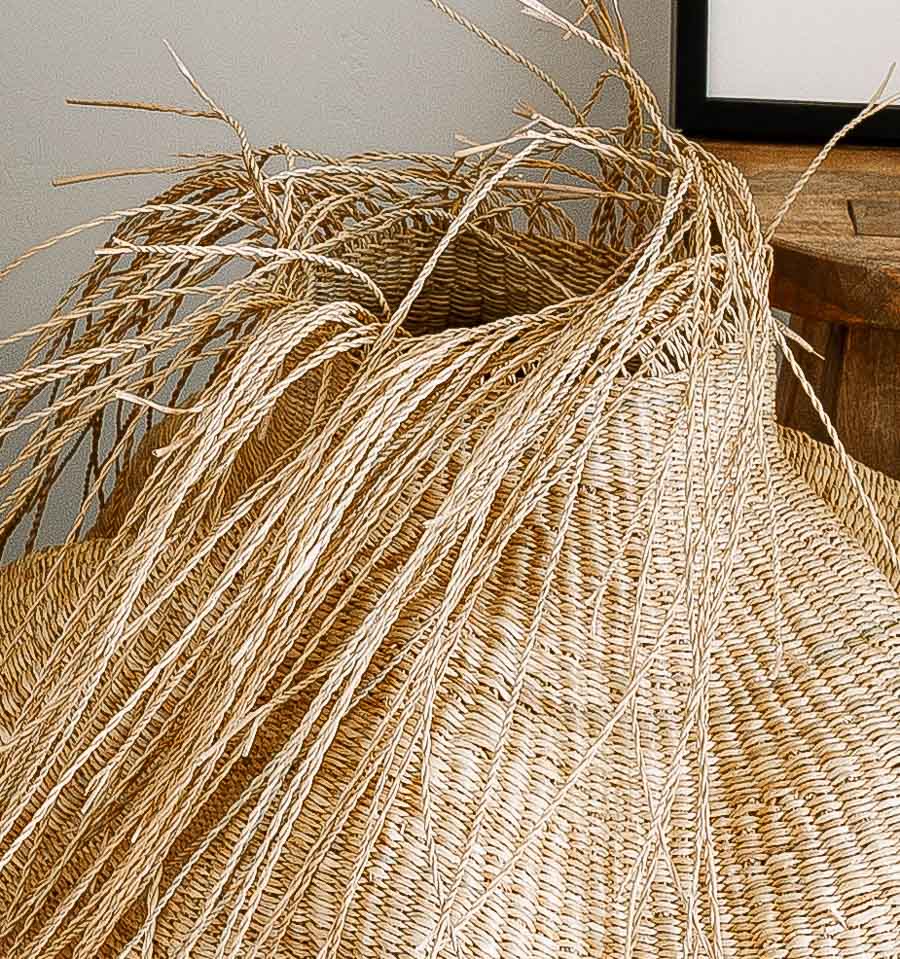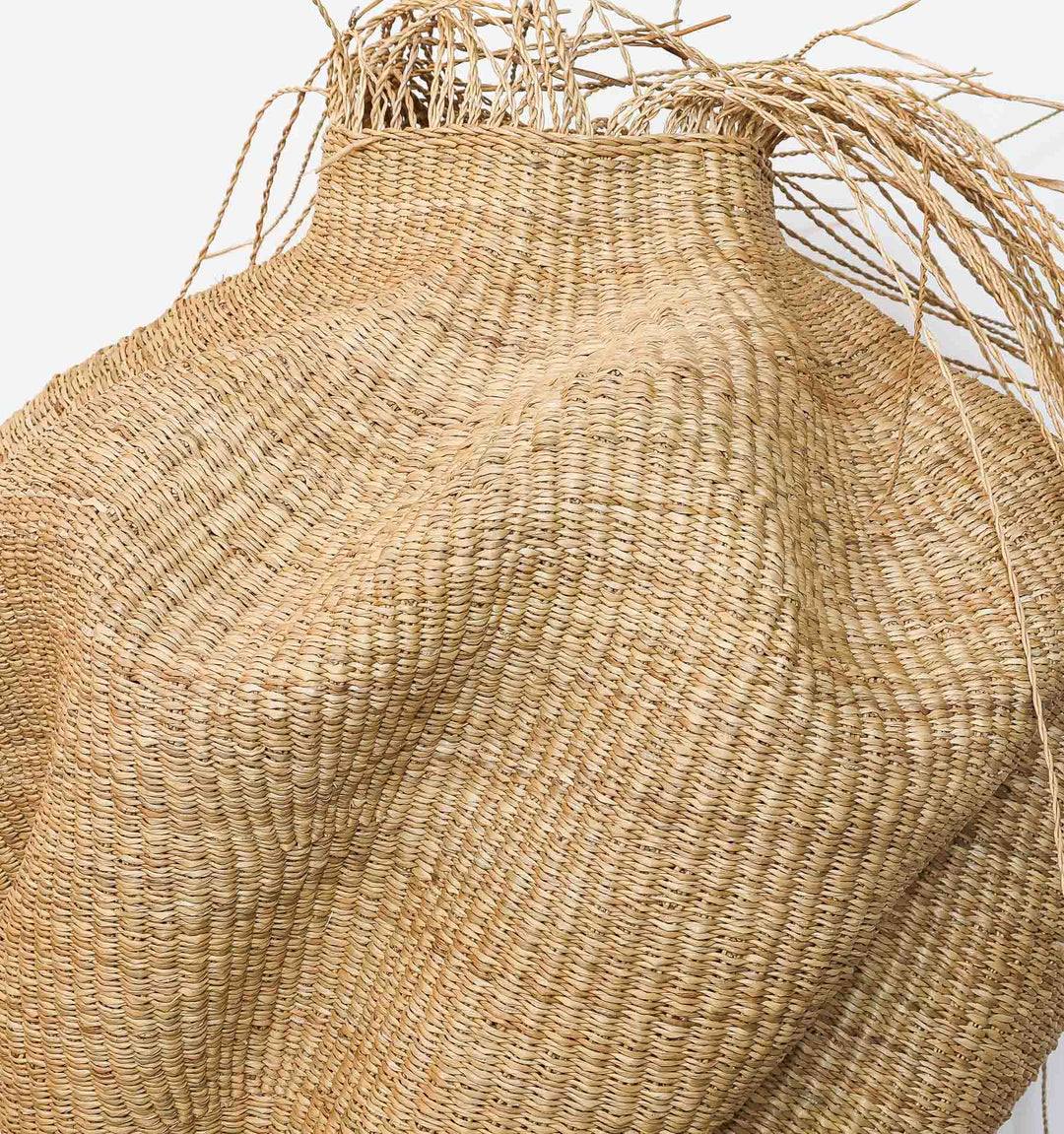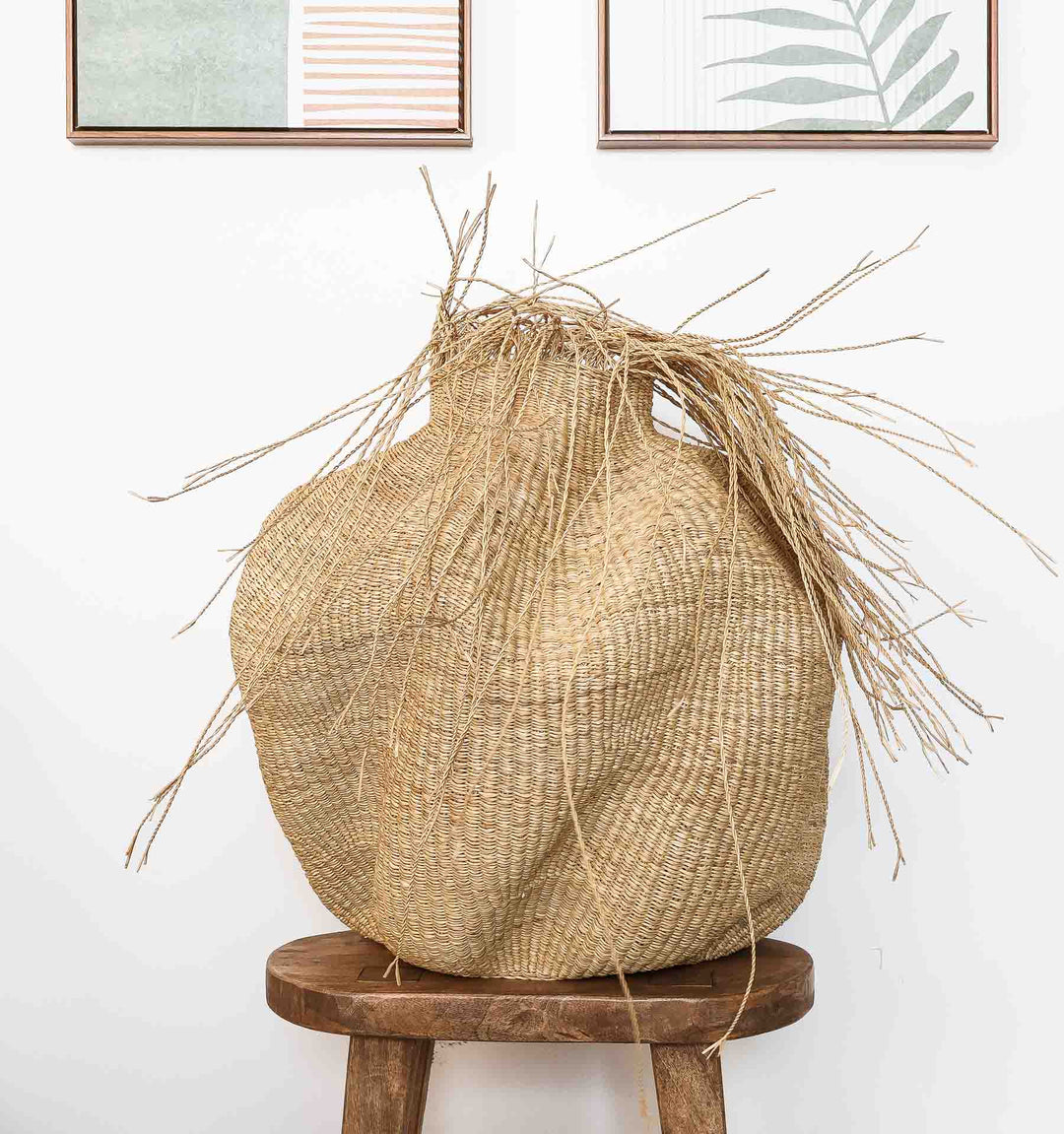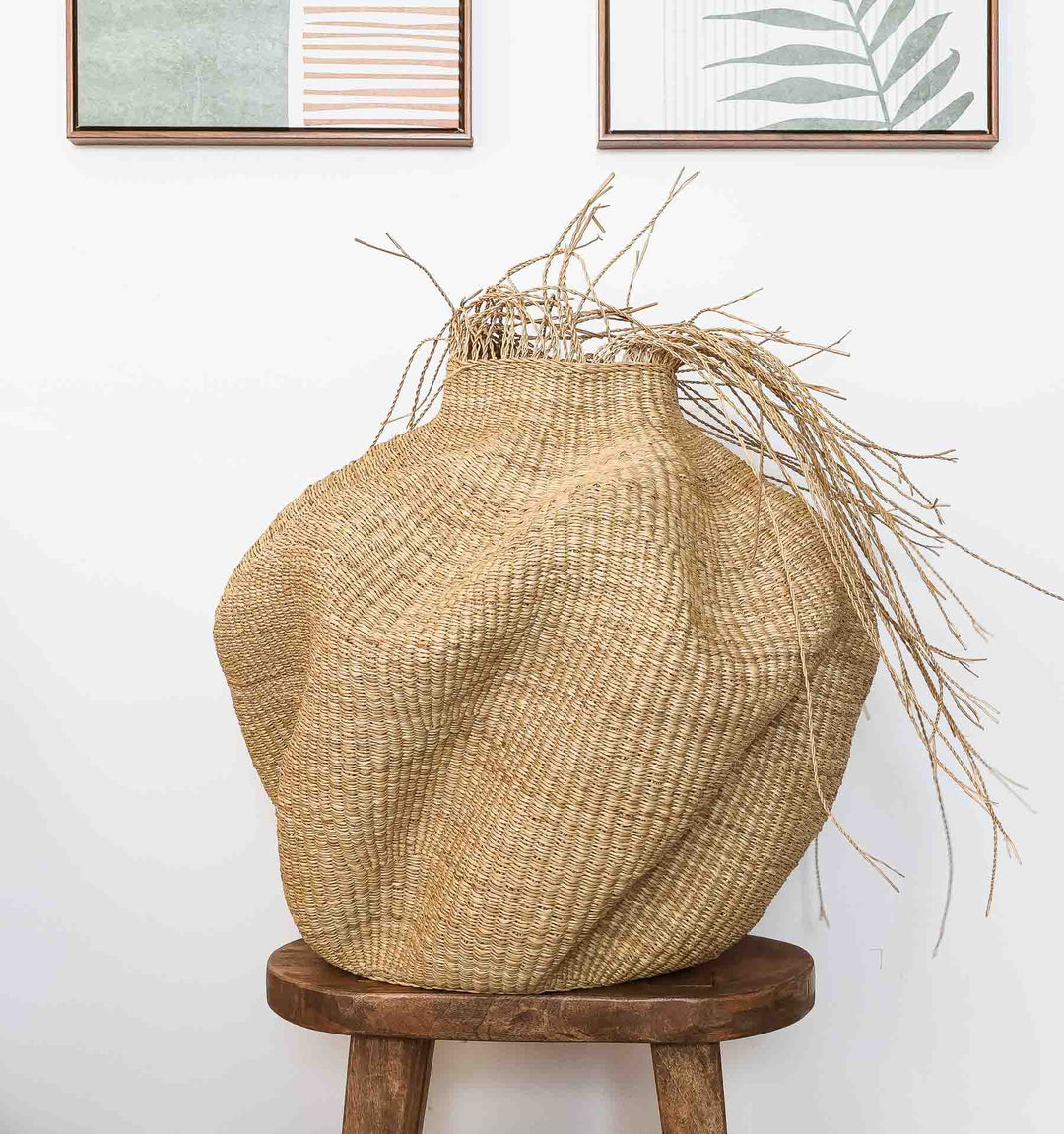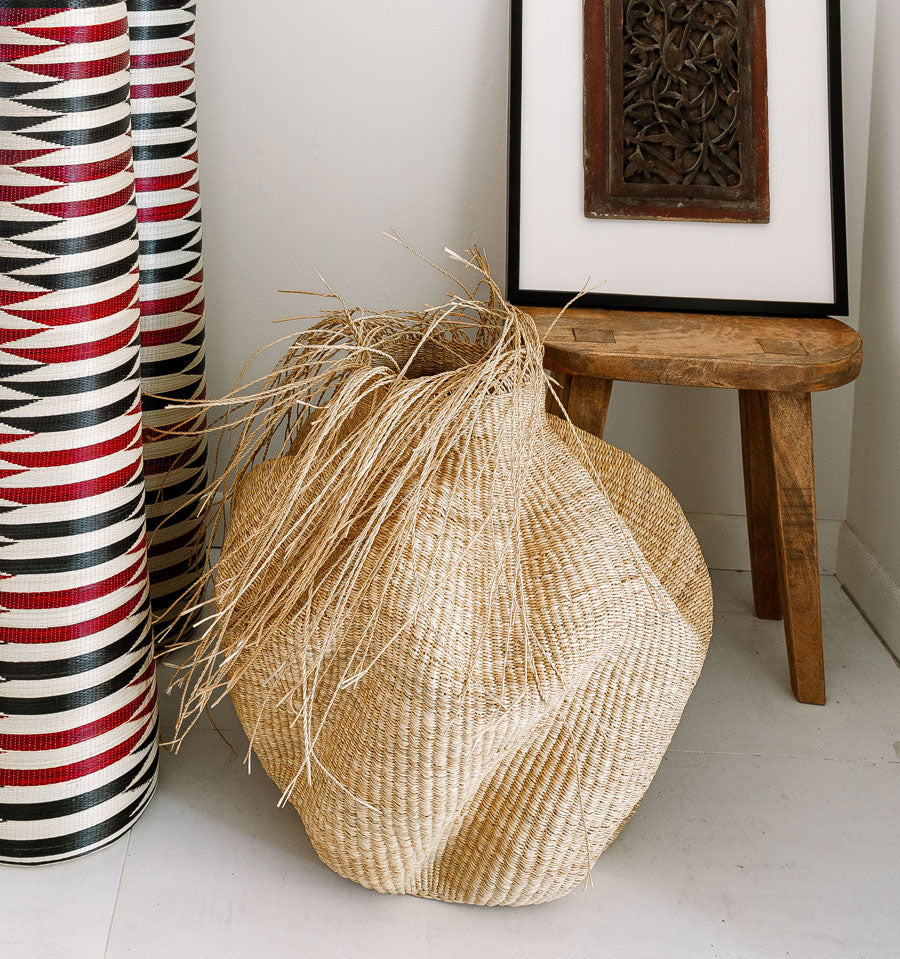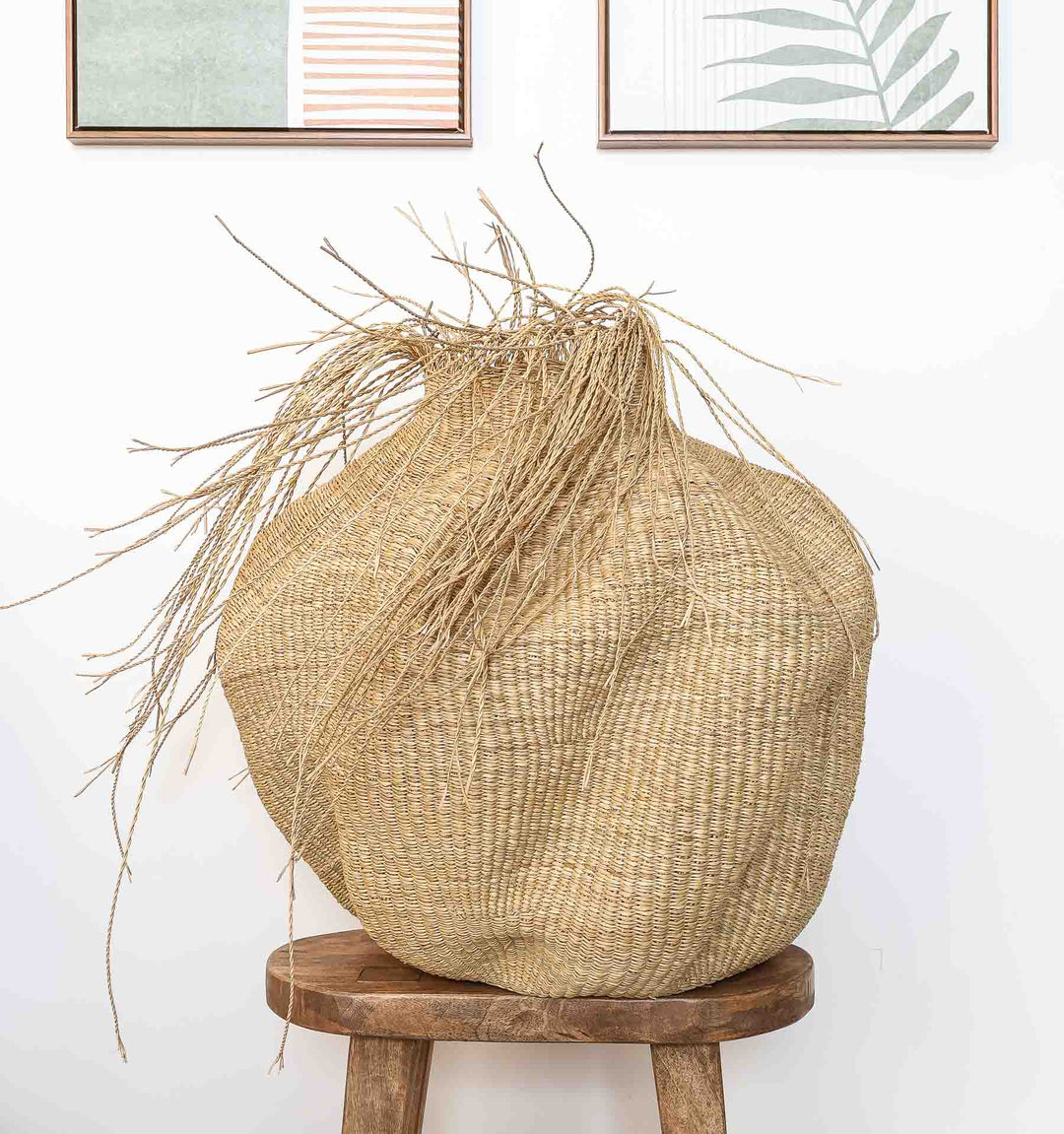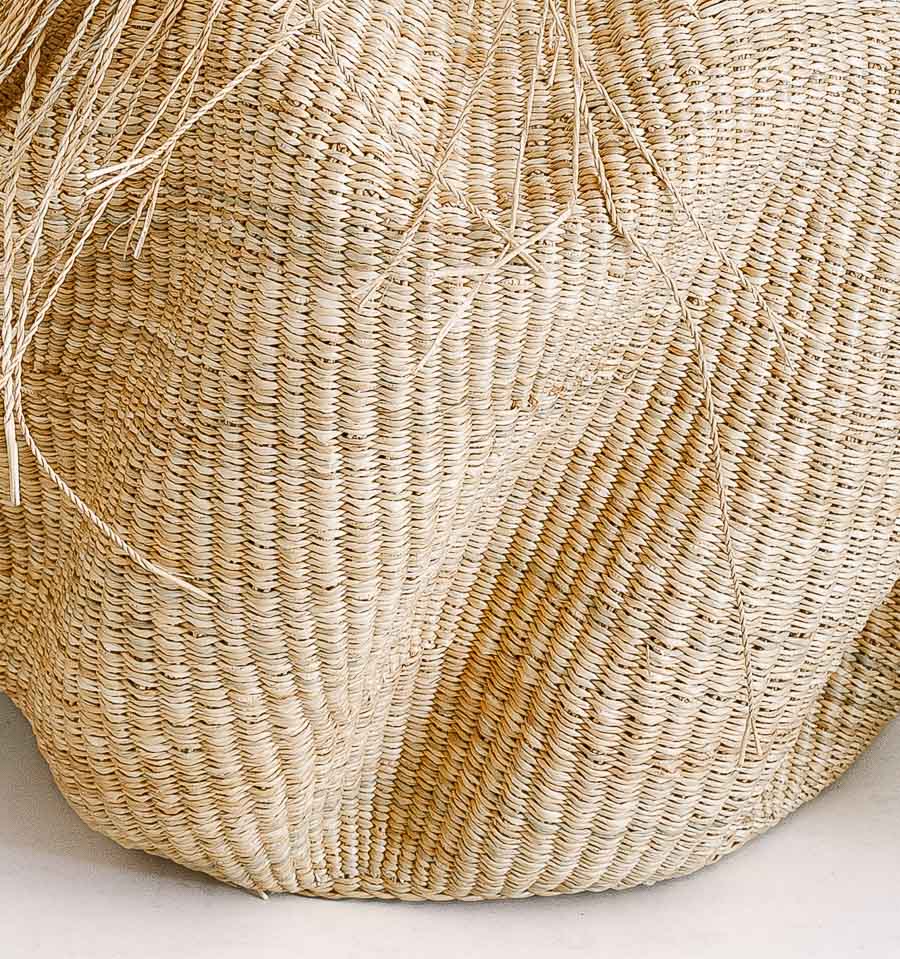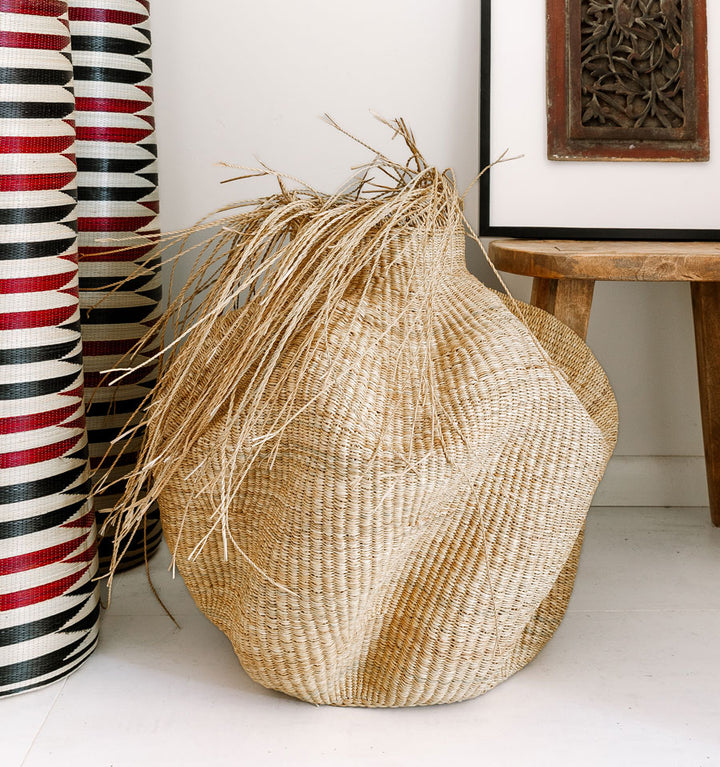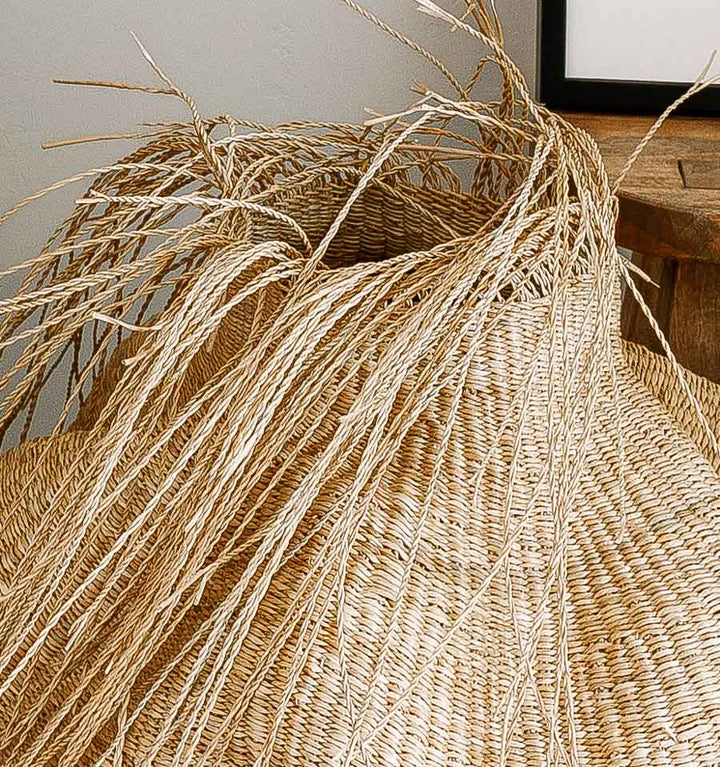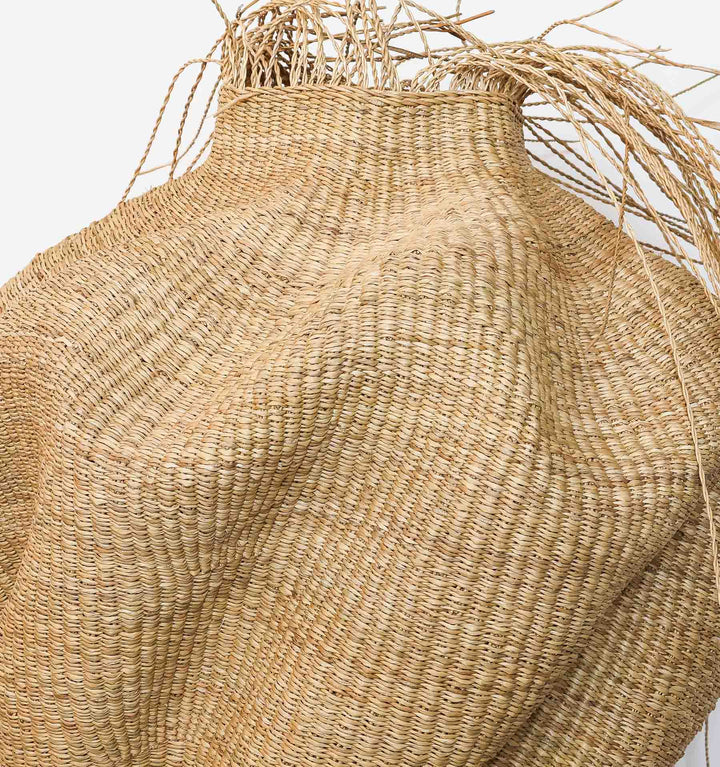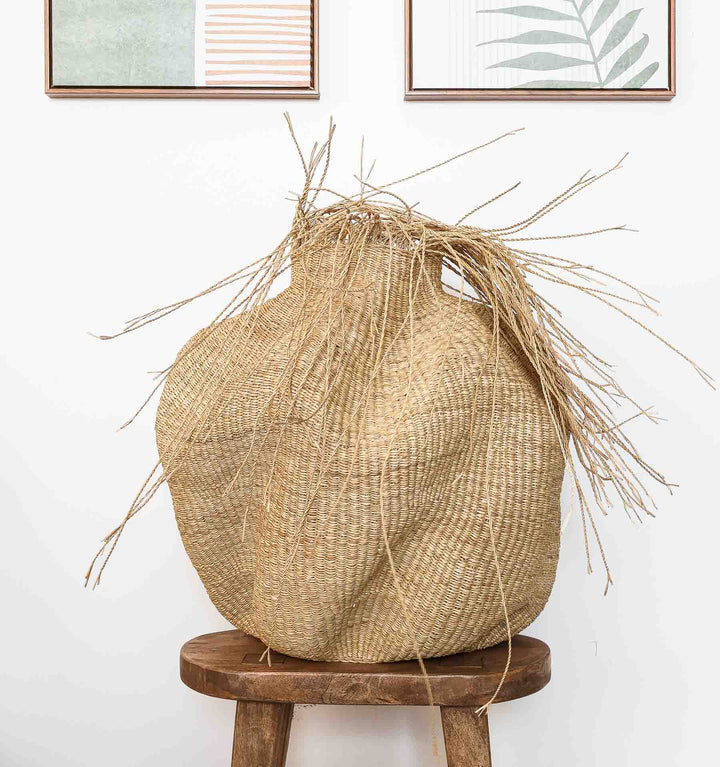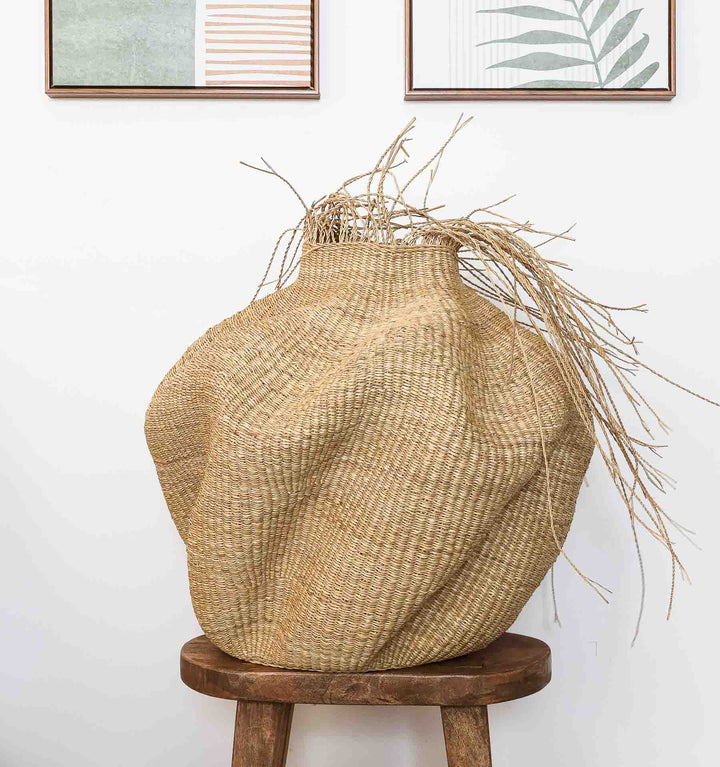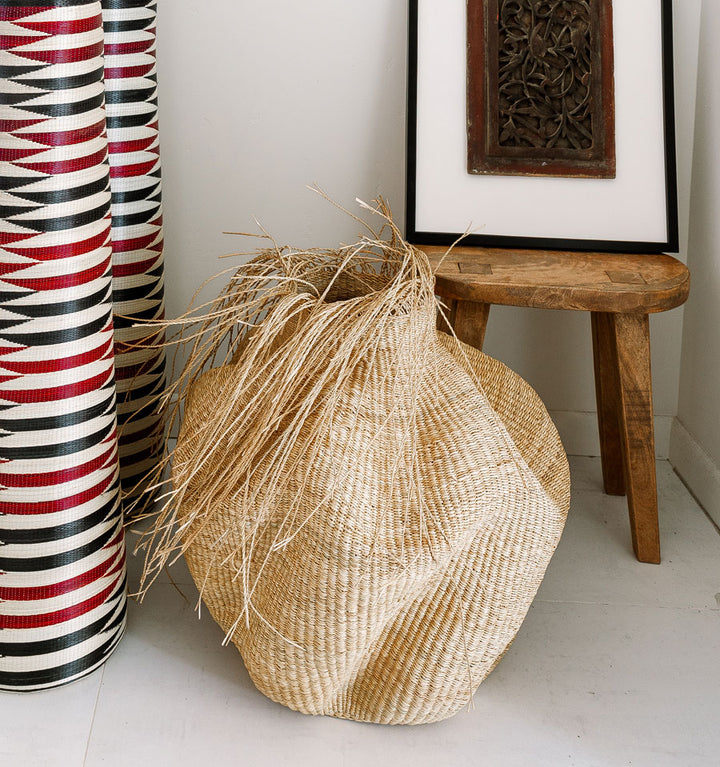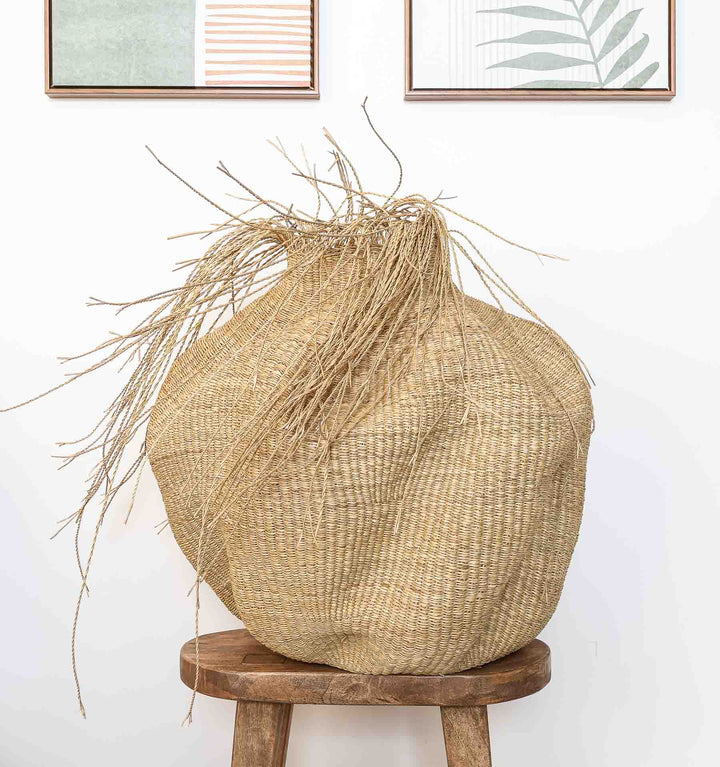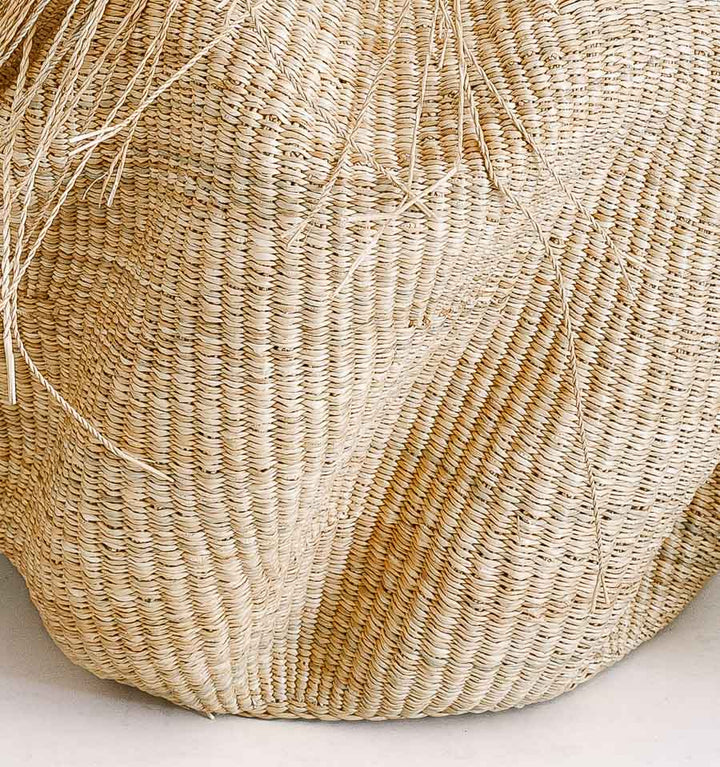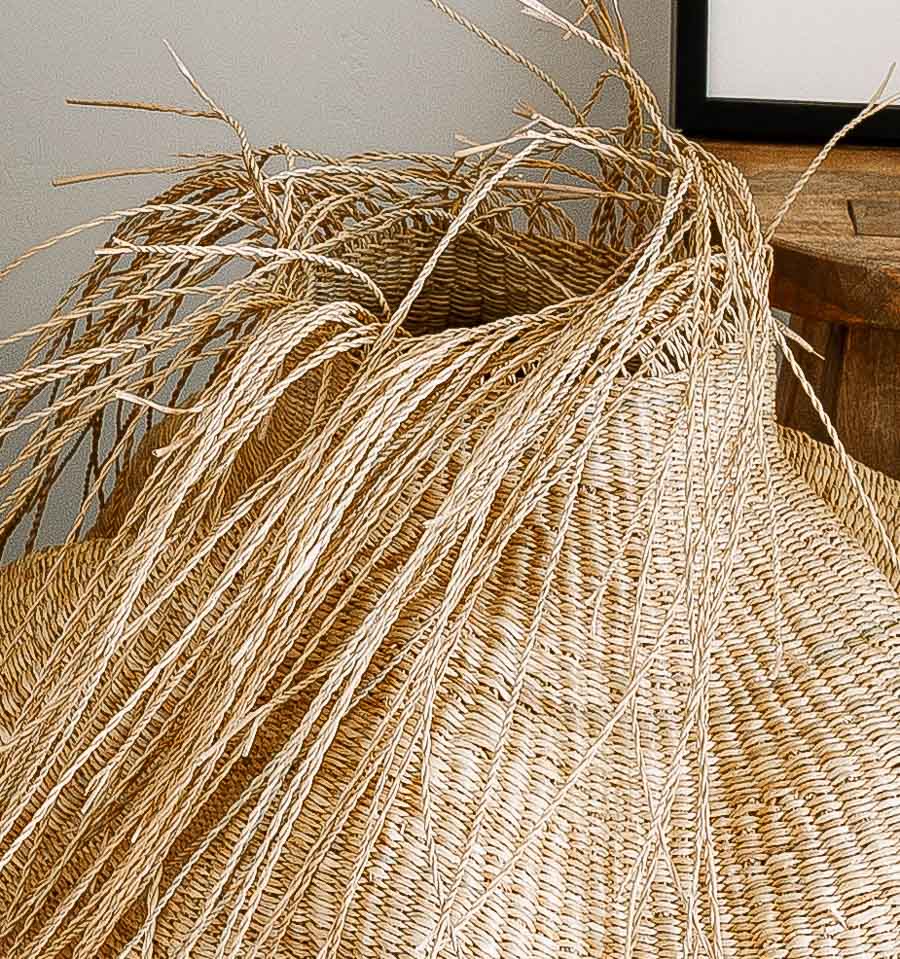The Story
These baskets are woven by hand in northern Ghana using locally harvested elephant grass—durable, flexible, and uniquely suited to sculptural work. Each piece is shaped by skilled artisans, many of whom have been weaving since childhood. Their hands follow a rhythm passed down through generations, blending technique with intuition.
The colors come from natural dyes and the heat of the sun, set into place through time and repetition. No two baskets are alike. Some carry soft, organic curves; others hold bold, geometric structure. Whether used for storage or display, each basket speaks of place, purpose, and a craft that endures.
The Making
Ghanaian baskets are born from both tradition and transformation. In Bolgatanga, in Ghana’s Upper East Region — a place marked by poverty and limited opportunity — master weavers are training a new generation of artisans to carry the craft forward. The work is more than weaving: it’s job creation, empowerment, and the revival of an art form. Using sophisticated coloration techniques and environmentally sustainable practices, artists shape natural elephant grass into vessels that are as purposeful as they are beautiful.
Each basket begins with hand-harvested, hand-split grasses softened in water before being sculpted into organic forms. Natural botanical pigments create striking palettes, while patterns and textures emerge through hours of patient, intentional work. Extra-large and visually commanding, these pieces were once made for sifting, storing, and separating — now they stand as collectible works of art, prized by connoisseurs around the world. The shift from functional tool to global treasure has been life-changing for the artisans who weave them.
Each piece is handwoven over many months using natural fibers and plant-based dyes. To protect its color and structure, we recommend displaying your woven art away from direct sunlight or skylights, as UV exposure can fade dyes and weaken fibers over time.
In very dry climates, you may occasionally mist the inside lightly with distilled or non-chlorinated water—similar to caring for wicker or rattan. Gently blot away any excess with a paper towel to help maintain the fiber’s natural balance.




